Hi, my name is Mike and I’m a wargamer.
Worse, I’m a wargamer who didn’t have a clear idea what the heck was going on in Europe from 1756 to 1763. I sort of knew it was called the Seven Years War in Europe, was a world-wide conflict, and that Prussia’s ultra-cool King Frederick II kicked a lot of butt. And the Austrians were, too. And sometimes Russians, but on which side? And … the French? The British??? I was lost.
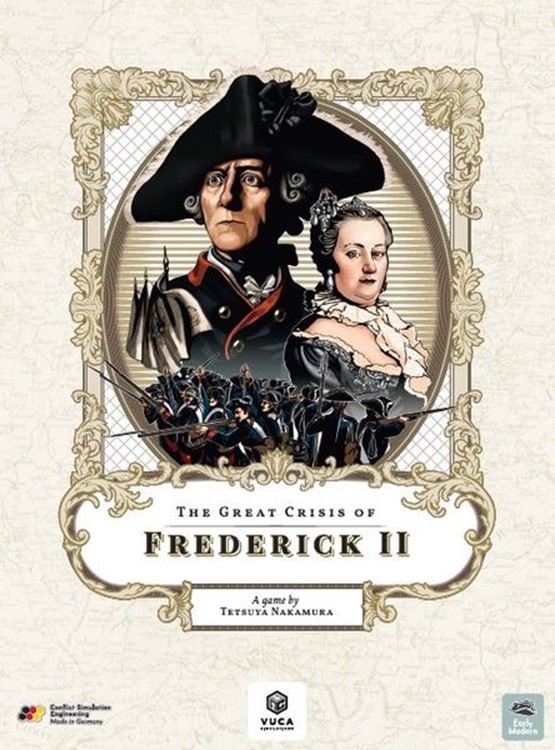
Thankfully, I found “The Great Crisis of Frederick II” (henceforth TGCoFOII), a recent release from VUCA Simulations. Here was the entire Seven Years War in Europe on a single map, in a single-session, in a highly playable game. If nothing else (and there is *plenty* else) I was schooled in the European military landscape of the time, as well as some of the key geographical and political concerns that drove this famous conflict.
A word about VUCA Simulations: Some of you may know them as the German publisher Furor Teutonicus, publishers of “Crossing the Line: Aachen 1944 ( here on BigBoardGaming https://bigboardgaming.com/audacity-meets-desperation-crossing-the-line-aachen-1944/ ).
The team subsequently became aware that the phrase “Furor Teutonicus”, which they selected from classic poetry, had been adopted as a catch-phrase of an extreme right-wing organization. As they completely reject that ideology, they put their money where their mouth is and changed the name of their company. Good on them. But, same team, same great publishers.
As with VUCA’s previous releases, TGCoFII delivers big on graphic and component quality. The rule book is full color and lavishly illustrated, with examples of play. I could do without semi-gloss paper stock since that is somewhat harder to read due to glare.
The game counters are thick, precisely printed, colorful with pre-rounded corners. Put away your Oregon Laminations corner rounders, folks, you won’t need them for this game. You may want to have a straight edge handy to rub down some sprue nibs on the sides of the counters. The counters themselves are crisply printed, clear, and easy to read.

I’ll admit I let out an internal groan when I saw that the counters are color coded for national affiliation. As is often the case, some of the colors are very difficult or impossible for color blind players (such as me) to distinguish. But VUCA anticipated this, and also put a distinctive national symbol on the counters so even I can tell who’s who in the zoo.
The mounted map board is outstanding. The graphics are vivid and very functional, supporting game play but also conveying the feel of the period. There are some nice touches, for example the names of several battle sites that didn’t make it as forts or cities are printed on the map anyway to show where they occurred. Several highly functional tracks, holding boxes, etc. make this a beautiful playing area.
The game includes cards which are sturdy and well designed, not stand-outs though. The components are rounded out with several d6 and a sturdy box well suited to storage.
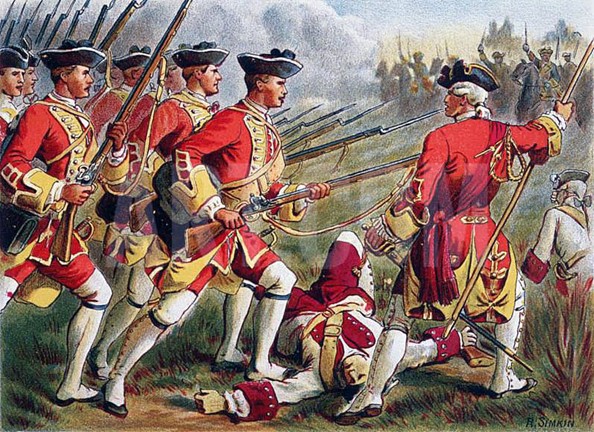
TGCoFII is a one-map game which uses point-to-point movement. The geography covered is from France and Netherlands in the west, Poland in the east, Sweden to the north, and Austria and the Holy Roman Empire to the south. Great Britain and Russia are mostly in off-map boxes.
Each player acts as the supreme commander of one of the two great Alliances. In this corner, we have the Prussian army allied with army of Great Britain & Hanover (one combined entity). And in the opposite corner we have the grand alliance of Austria, France and Russia (who may switch sides to the Prussians at some point in the game). The Austrian Army is further subdivided into national armies of Sweden, Saxony and the Holy Roman Empire.
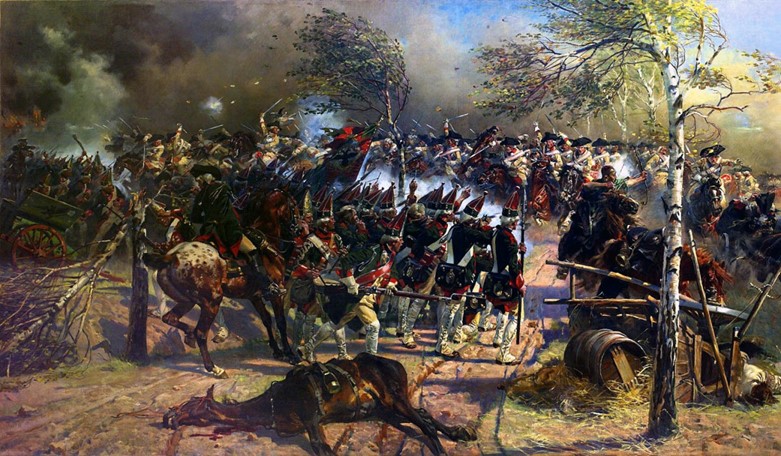
Alliances verses Armies verses Nations become important distinctions, impacting mobilization (rebuilding troops), supply, victory points, and movement capabilities. It behooves the player to pay close attention to this critical nuance.
Game play is driven by army activation by chit pull. Each army has one or more chits that are added to the draw cup on a staggered basis across several game turns. Additionally, an End Turn chit is included which, not surprisingly, ends the turn when pulled. That can mean that some armies … or all the armies … may not get to activate at all.
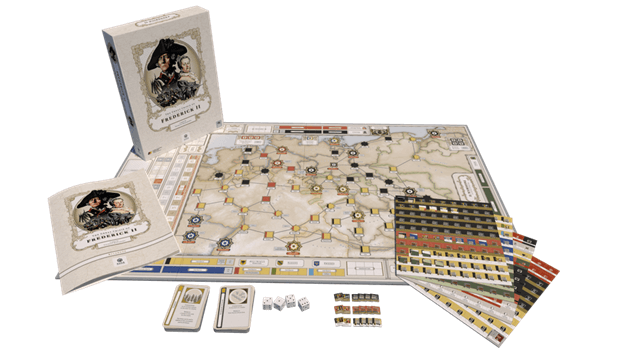
The activating army rolls a d6 to determine how many Action Points they get to use to move, rebuild, attack, etc. The Prussian player gets an automatic +2 DRM on this die roll and there are cards that can augment the number of Action Points. When you combine this mechanic with chit-pull activation and variable turn end you get a game that has a lot of surprises, and which is very well suited for solitaire play. Leadership ratings will allow for larger, more powerful stacks to move and attack.
The map spaces represent forts and cities. Some of the have Resource symbols which serve two functions: they are supply sources and victory objectives. Players will pull chits, roll for Action Points, move, have combat, capture and lose cities and forts. All the while more armies join the fray, allies switch sides, and nations are knocked out of the war.
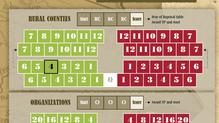
I very quickly learned the folly of unrestrained advances – supply and sieges put paid to over-aggressive play and rewards the practice of screening and covering lines of communication. My appreciation for some of the Seven Years War battles I know about increased seeing how seemingly insignificant locations become key objectives due to supply considerations.
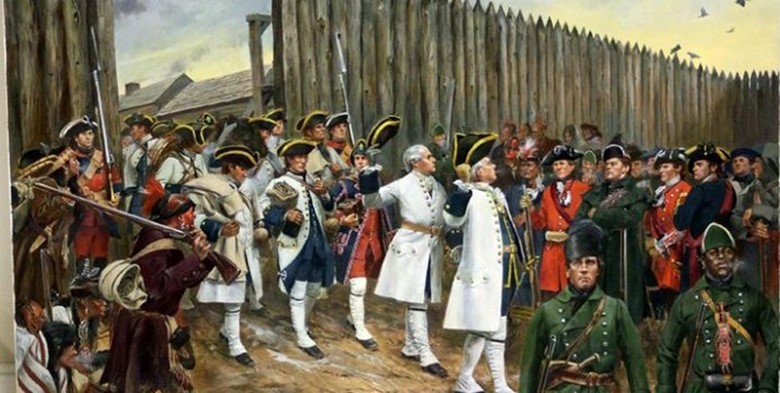
Combat is kept very simple: successive rounds of combat with units contributing dice to a “bucket of dice” resolution – you’re rolling for 6’s to hit, with a few modifiers for leadership and terrain. Players get options to retreat or withdraw into forts if things are not going well. I was not bothered by the simplicity of the system, though I can see how some may not care for it.
Victory is determined by the number of resource spaces controlled by the Prussian player. When it falls below a certain number, the Austrian player wins, or if it rises a certain level the Prussian player wins. Another victory condition is the elimination of the King Frederick leader. This is actually trickier than you may think because Frederick is such a capable leader that it’s hard to resist using him on the front lines … but that also puts him at risk. There are a few Draw conditions as well.
So, players have a lot to aim for and several strategies to pursue. Mobility, leadership, and central position are on the Prussian player’s side. Robust activation chit population and a healthy +2 DRM guarantees three Action Points minimum and a lot of mobility. Time is on the Austrian’s side as several armies join (France and Russia, most notably).
The game is very solitaire friendly. Of course, the chit pull system that includes an unpredictable end of turn is a major factor. While cards are a factor, I found a simple method of regulating card play worked well – I gave each side a 4 in 6 chance of playing a card (so roll a 5 or 6, they pass, even if it makes no sense). Then I select 2 cards that could be played and roll a die – odd, one card is played, even the other. I’m sure smarter players than me will be able to devise more interesting solo rules for card play.
After several play-throughs what stands out about this game is how it strikes a very effective balance between historical constraints, streamlined mechanics, clear victory objectives – with a healthy dose of random chaos. In my games I really felt engaged by the game and the system, and was able to get the cinematic sweep of the Seven Years War.
And, finally, I see what the French were doing getting involved!